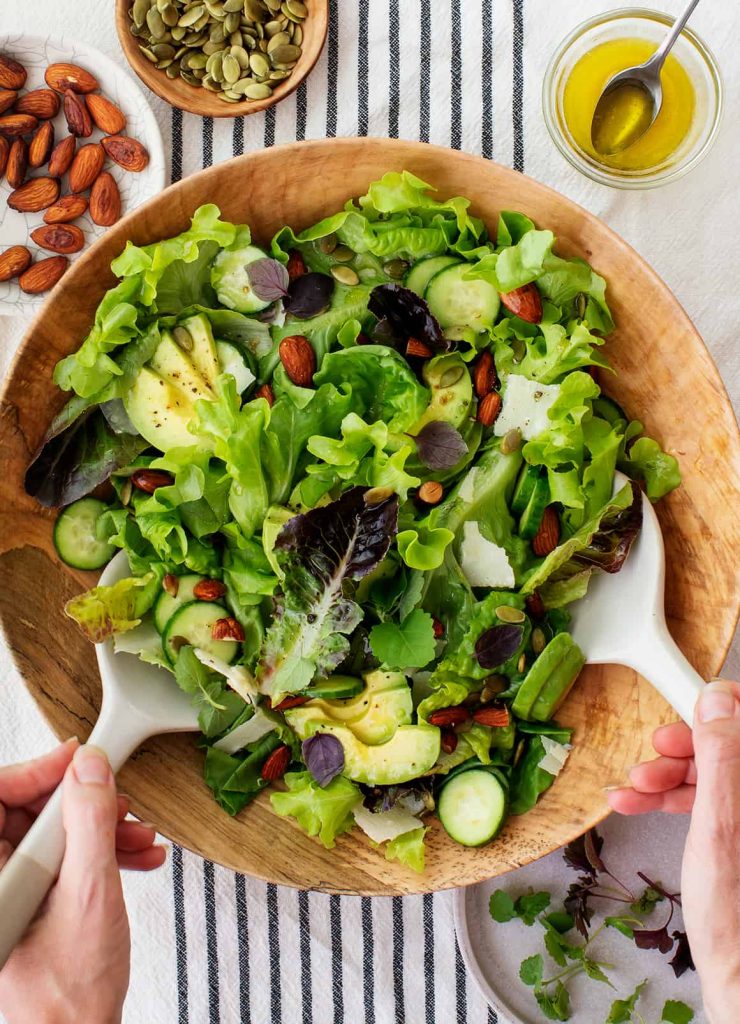Salads are the perfect combination of health and flavor, making them a go-to option for anyone looking to enjoy a nutritious meal. But how do you create a salad that’s not only healthy but also satisfying and delicious? In this blog post, we’ll explore how to build a balanced, nutritious salad using the right ingredients and kitchen tools. Follow these steps to create a salad that will leave you feeling energized and full.

1. Start with a Healthy Base
The foundation of a great salad is its base. Start with fresh greens like spinach, kale, or mixed lettuce. These leafy greens are packed with vitamins, minerals, and antioxidants that are essential for overall health. Opt for organic when possible to avoid pesticides.
- Keyword: Fresh greens, spinach, kale, mixed lettuce, organic
2. Add Protein for Satiety
To make your salad more filling, add a source of lean protein. Grilled chicken, boiled eggs, quinoa, or tofu are excellent options. These proteins will help keep you full longer and provide essential amino acids your body needs.
- Keyword: Lean protein, grilled chicken, boiled eggs, quinoa, tofu
3. Incorporate Healthy Fats
Don’t shy away from adding healthy fats to your salad. Ingredients like avocado, nuts, and seeds are not only delicious but also provide heart-healthy fats that can help absorb fat-soluble vitamins from your greens.
- Keyword: Healthy fats, avocado, nuts, seeds, heart-healthy
4. Load Up on Vegetables
A truly nutritious salad is rich in a variety of colorful vegetables. Add a mix of bell peppers, carrots, cucumbers, and tomatoes to increase the nutrient density of your salad. The more colors on your plate, the more vitamins and minerals you’ll consume.
- Keyword: Colorful vegetables, bell peppers, carrots, cucumbers, tomatoes, nutrient density
5. Include Whole Grains for Extra Fiber
Adding whole grains to your salad is a great way to boost its fiber content. Consider adding brown rice, barley, or farro. These grains will not only make your salad more filling but also help regulate digestion.
- Keyword: Whole grains, fiber, brown rice, barley, farro, digestion
6. Choose the Right Dressing
Salad dressing can make or break the health factor of your salad. Choose a dressing made from olive oil and vinegar or a light yogurt-based dressing. Avoid dressings with added sugars or unhealthy fats.
- Keyword: Salad dressing, olive oil, vinegar, yogurt-based, low-sugar
7. Use Kitchen Tools for Perfect Preparation
Utilize kitchen tools like a salad spinner to thoroughly wash and dry your greens, and a mandoline slicer to achieve perfectly thin slices of vegetables. These tools can save time and enhance the texture of your salad.
- Keyword: Kitchen tools, salad spinner, mandoline slicer, texture
8. Don’t Forget the Herbs and Spices
Adding fresh herbs like basil, cilantro, or parsley can elevate the flavor of your salad without adding extra calories. Additionally, spices like pepper, paprika, or cumin can provide a flavorful punch.
- Keyword: Fresh herbs, basil, cilantro, parsley, spices, pepper, paprika, cumin
9. Keep it Fresh and Simple
While it’s tempting to add a lot of ingredients, sometimes keeping it simple is the best approach. Stick to a few key ingredients that complement each other well, ensuring your salad remains fresh and not overwhelming.

